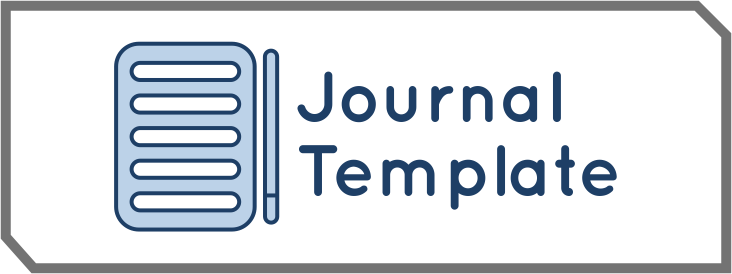Understanding the Communication Strategy of Women's Rights Protection in the Digital Era through Website
DOI:
https://doi.org/10.26623/themessenger.v11i2.1194Keywords:
Kalyanamitra, Website, Communication Strategy, MRTAbstract
The National Commission on Violence Against Women in Indonesia through their website, release that there are three women who become victims of sexual violence every two hours. Kalyanamitra was chosen as the subject of the study because there are not many NGO s committed in protecting women's rights in Indonesia that have survived for more than 33 years. This study aims to explain how the communication strategy has been done in this organization through their official website. The important of doing this study is that can inspire other NGO s to optimize the use of online media. The theories used in this study are Media Rich Theory (MRT). This study use interpretative paradigm with the type of research is qualitative descriptive. Data were collected by using content analysis from website https://www.kalyanamitra.or.id/#. As the result, Kalyanamitra has done effective communication strategy by using techniques such as canalizing, informative, persuasive, and also educative.Downloads
References
Adi. (2010). 11 Bentuk Kekerasan Seksual pada Perempuan. Retrieved from 24 November 2010 website: https://m.viva.co.id/berita/metro/190382-11-kekerasan-seksual-terhadap-perempuan
Arifin, A. (1994). Strategi Komunikasi, Sebuah Pengantar Ringkas. Bandung: CV. ARMICO.
Cangara, H. (2016). Komunikasi Politik: Teori, Konsep dan Strategi (Edisi Revisi). Jakarta: Rajawali Pers.
Daft, R., & Lengel, R. (1984). Information richness: a new approach to managerial behaviour and organization Design. Research in Organizational Behaviour, 6, 191 233.
Daft, R., & Lengel, R. (1986). Organizational Information Requirements, Media Richness and Structural Design. Journal of Management Science, 32(5), 554 571.
Denzin, N. K., & Lincoln, Y. S. (2011). The SAGE Handbook of Qualitative Research 1 (3rd ed.). Yogyakarta: Pustaka Pelajar.
Harmoni, A. (2014). Media Richness Theory dan Potensi Website sebagai Media Komunikasi CSR oleh Perusahaan. Gunadarma University Repository. Retrieved from http://repository.gunadarma.ac.id/1303/
Hemawati, R. (2016). Percepat Perlindungan Perempuan. Retrieved from 04 May 2016 website: http://mediaindonesia.com/news/read/43753/percepat-perlindungan-perempuan/2016-05-04
Kalyanamitra. (2018). Kalyanamitra. Retrieved March 20, 2019, from 2018 website: http://www.kalyanamitra.or.id
Kementerian Sekretariat Negara RI. (2015). Perlindungan Perempuan dari Ancaman Kekerasan Seksual. Retrieved March 20, 2019, from 26 May 2015 website: http://www.presidenri.go.id/berita-aktual/perlindungan-perempuan-dari-ancaman-kekerasan-seksual.html
Lodhia, S. K. (2006). The World Wide Web and Its Potential for Corporate Environmental Communication: A Study into Present Practices in the Australian Minerals Industry. The International Journal of Digital Accounting Research, 6(11), 65 94.
Mukaromah, & Sari, D. P. (2016). Laman dan Reputasi Lembaga Dalam Membangun Komunikasi dengan Stakeholders. Jurnal The Messenger, 8(2), 35 42. Retrieved from http://journals.usm.ac.id/index.php/the-messenger/article/view/341/231
Pawito. (2007). Penelitian Komunikasi Kualitatif. Yogyakarta: LKIS.
Vydia, V. (2009). Pemanfaatan Website Sebagai Media Promosi Pada Fakultas Teknologi Informasi dan Komunikasi Universitas Semarang (Studi kasus pada fakultas teknologi informasi dan komunikasi USM). Jurnal The Messenger, 1(1), 42 47.
Widjaja, H. A. (2010). Komunikasi, Komunikasi & Hubungan Masyarakat. Jakarta: Bumi Aksara.
World Health Organization. (2017). Violence against women. Retrieved March 20, 2019, from 29 November 2017 website: https://www.who.int/news-room/fact-sheets/detail/violence-against-women
Zmud, R., Lind, M., & Young, F. (1990). An Attribute Space for Organizatonal Communication Channels. Journal Information Systems Research, 1(4), 440 457. https://doi.org/https://doi.org/10.1287/isre.1.4.440
Zpalanzani, A., Ahmad, H., & Maulana, B. (2006). Histeria! Komikita: Membedah Komikita Masa Lalu, Sekarang, Dan Masa Depan. Jakarta: PT Elex Media Komputindo.
Downloads
Additional Files
Published
Issue
Section
License
Copyright Transfer Form
The copyright to this article is transferred to the Department of Communication, Faculty of Information Technology and Communication, Universitas Semarang if and when the article is accepted for publication. The undersigned hereby transfers any and all rights in and to the paper including without limitation all copyrights to the Department of Communication, Faculty of Information Technology and Communication, Universitas Semarang. The undersigned hereby represents and warrants that the paper is original and that he/she is the author of the paper, except for material that is clearly identified as to its original source, with permission notices from the copyright owners where required. The undersigned represents that he/she has the power and authority to make and execute this assignment.
We declare that:
1. This paper has not been published in the same form elsewhere.
2. It will not be submitted anywhere else for publication prior to acceptance/rejection by this Journal.
3. A copyright permission is obtained for materials published elsewhere and which require this permission for reproduction.
Furthermore, I/We hereby transfer the unlimited rights of publication of the above mentioned paper in whole to the Department of Communication, Faculty of Information Technology and Communication, Universitas Semarang. The copyright transfer not covers the exclusive right to reproduce and distribute the article, including reprints, translations, photographic reproductions, microform, electronic form (offline, online) or any other reproductions of similar nature.
The corresponding author signs for and accepts responsibility for releasing this material on behalf of any and all co-authors. This agreement is to be signed by at least one of the authors who have obtained the assent of the co-author(s) where applicable. After submission of this agreement signed by the corresponding author, changes of authorship or in the order of the authors listed will not be accepted.
Retained Rights/Terms and Conditions
1. Authors retain all proprietary rights in any process, procedure, or article of manufacture described in the Work.
2. Authors may reproduce or authorize others to reproduce the work or derivative works for the authors personal use or for company use, provided that the source and the Department of Communication, Faculty of Information Technology and Communication, Universitas Semarang copyright notice are indicated, the copies are not used in any way that implies the Department of Communication, Faculty of Information Technology and Communication, Universitas Semarang endorsement of a product or service of any employer, and the copies themselves are not offered for sale.
3. Although authors are permitted to re-use all or portions of the Work in other works, this does not include granting third-party requests for reprinting, republishing, or other types of re-use.




